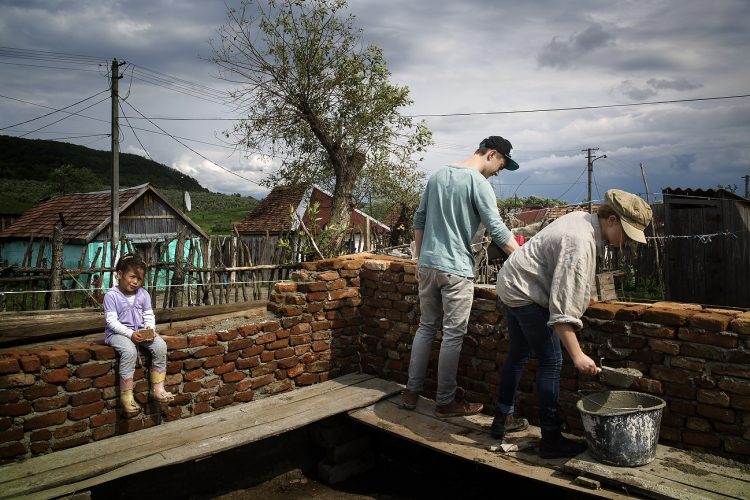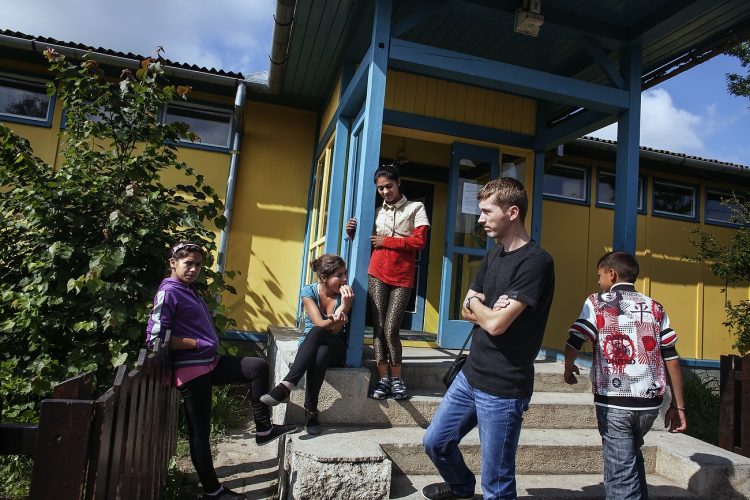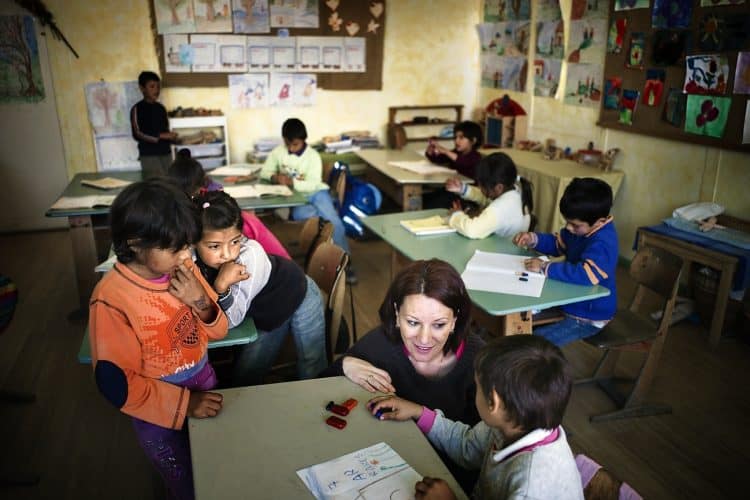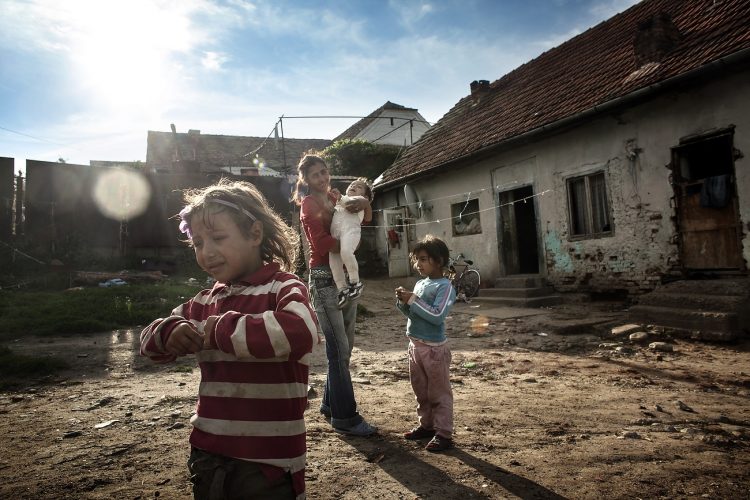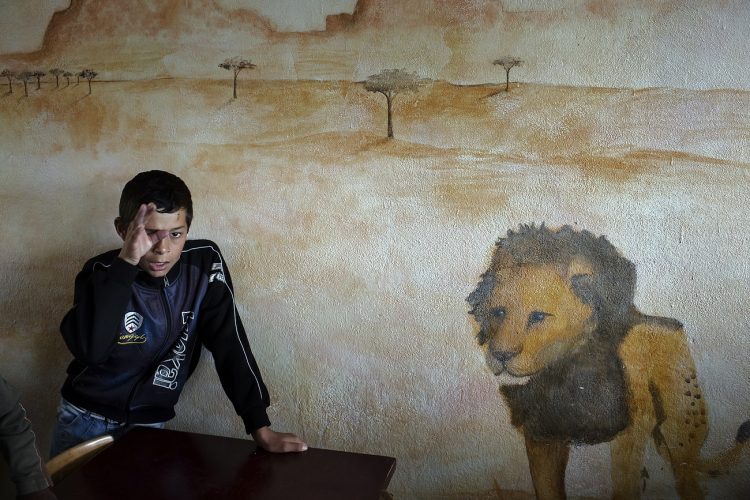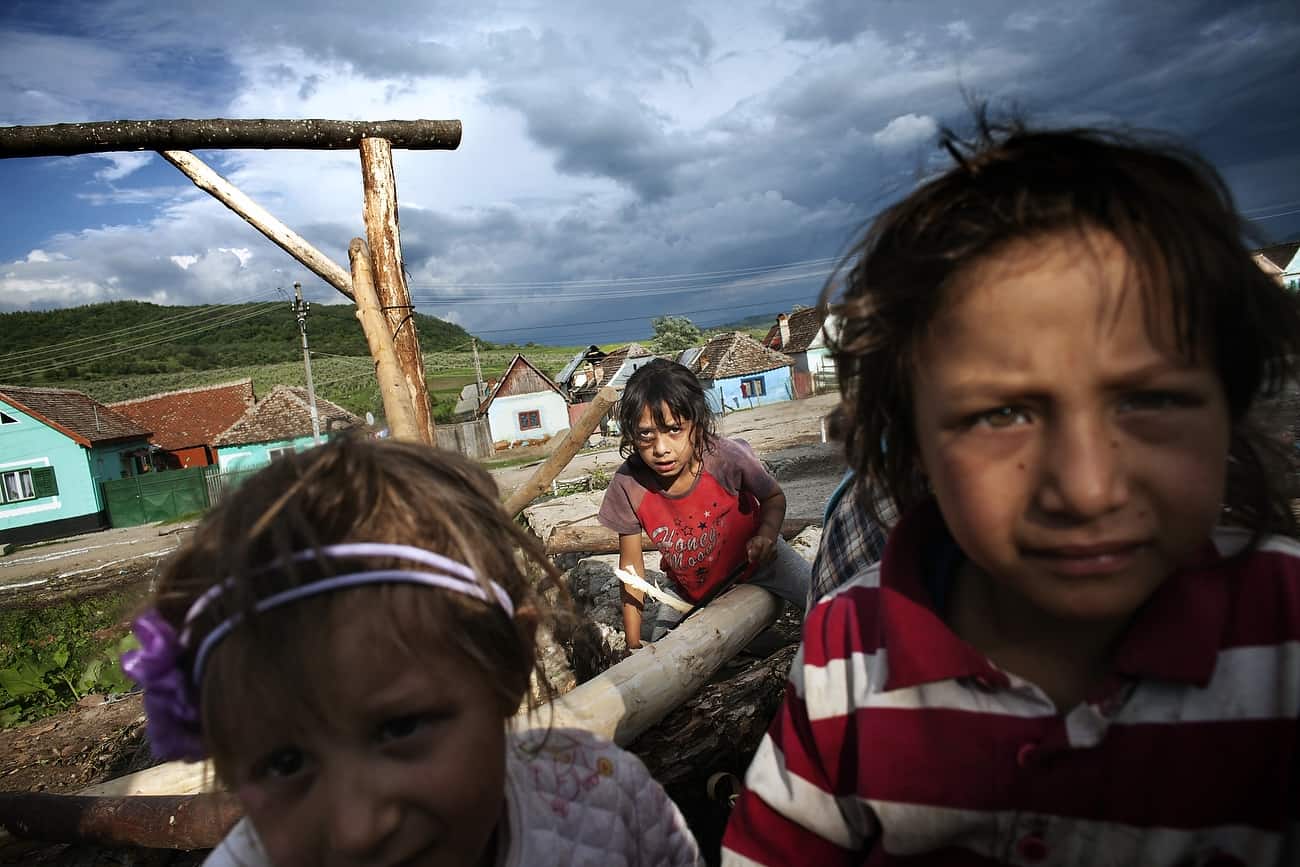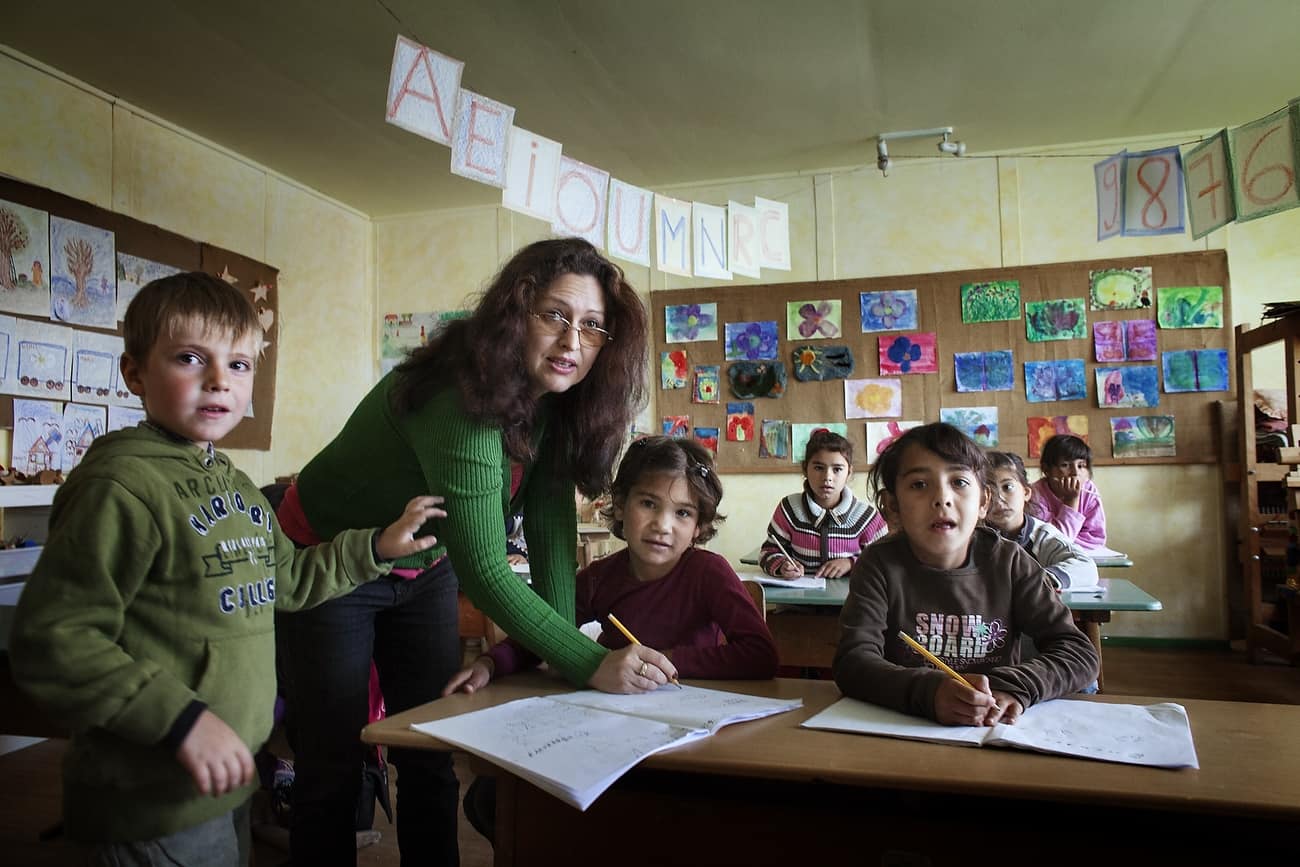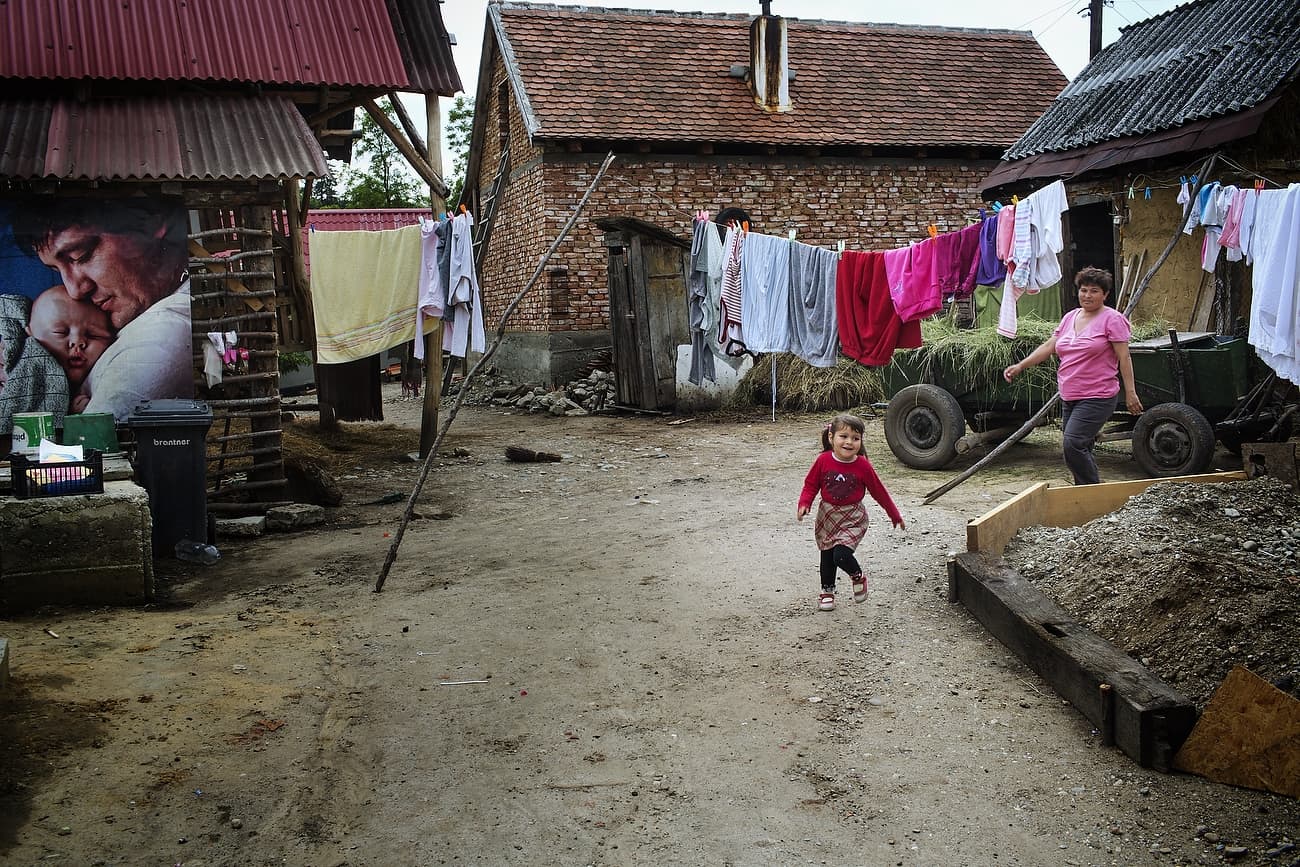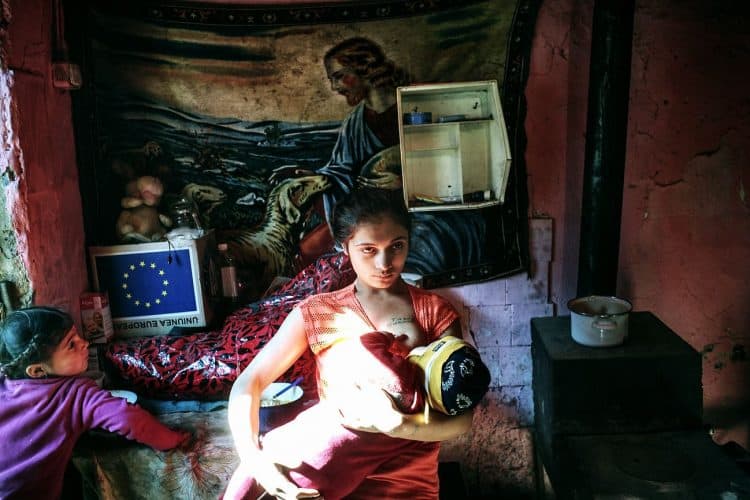The Waldorf School in Rosia is part of the public school system. The regular village school in Rosia and the Waldorf School both share the same location, on top of a beautiful hill. Yet the Waldorf School is “for Roma children only.” And given the buildings stand side by side, you can immediately tell which the Roma kids are by looking to see which building they enter every morning.
Most of the Roma community lives at the bottom of the hill, so when I first saw the Roma kids climbing the quite steep slope, carrying their worn, faded rucksacks, they reminded me of the myth of Sisyphus.
From the first day the plans for the school were presented to the community, it was clear to everyone in Rosia that the Waldorf School was going to be the school for the poor and uneducated Roma kids.
The idea of having such a place solely for Roma kids was bad enough, but building the school next to the village school takes the biscuit.
Mixed educational institutions are regarded as the best solution for integration in the United States. In some cases, they worked as planned. In other cases, after a time, the white kids “migrated” to better neighbourhoods with better schools, where the majority of the pupils were white, while the African-American kids remained in the schools in the deprived areas, where the minorities eventually formed their own majority. Because this appeared to be a personal decision, and because the kids never shared the same backyard, this kind of segregation is not as in-your-face as the case of the two schools in Rosia.





